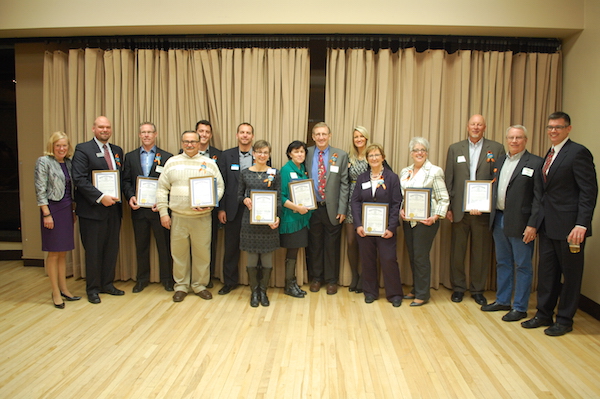A work session of the Fruitport Charter Township board began at 6:30 p.m. on Monday, November 9, 2015, in the township board room.
Members Present: Carol Hulka, Clerk; Rose Dillon, Treasurer; Trustees Ron Becklin, Dave Markgraf, Marjorie Nash and Chuck Whitlow Member
Absent: Supervisor Brain Werschem–excused
Also Present: 0–employee; 0-residents; Public Safety Director, Doctor; and DPW Director, Farrar
At 7:00 p.m., Clerk Hulka opened the regular meeting with the Pledge of Allegiance followed with a prayer by Treasurer Dillon.
The motion byChuck Whitlow, seconded by Ron Becklin , was carried unanimously, to appoint Dave Markgraf as the Supervisor Pro Tem to chair the board meeting in the absence of the Supervisor.
The meeting minutes of October 12, 2015, regular meeting, were approved as presented.
The motion by Carol Hulka, seconded by Rose Dillon, was carried unanimously, to approve the meeting agenda of November 9, 2015, with the following addition under New Business, (D): Street light proposal for DeFeyter
CORRESPONDENCE / REPORTS
1) Michigan Townships Association legislative updates
2) An article regarding funding for new voting machines
3) Parks and Recreation meeting minutes of October 27th
4) Planning Commission minutes dated October 20, 2015
5) Revenue and Expenditure Report for period ending 10/31/2015
7) Muskegon County Chapter of Michigan Townships Association quarterly meeting is at Egelston Township on November 30th
PUBLIC COMMENTS – PART 1 None received.
UNFINISHED BUSINESS: None
NEW BUSINESS:
15-101 Great Lakes Comnet Metro Act Permit
Rose Dillon moved, seconded by Ron Becklin, MOTION CARRIED, to approve a five year Unilateral Metro Act Permit with Great Lakes Comnet, Inc. that includes the following two exhibits- Exhibit A: a map showing the rights of way granted and Exhibit B: a copy of the liability insurance certificate. The purpose for the permit is for access to and on-going use of public rights-of-way within the Township of Fruitport for the purpose of constructing a fiber optic network extension to service its customers.
Ayes: Dillon, Becklin, Nash, Hulka, Markgraf, Whitlow
Nays: None
15-102 Parks and Rec Master Plan
Marjorie Nash moved, seconded by Ron Becklin, MOTION CARRIED, to adopt the Fruitport Charter Township Parks and Recreation Master Plan for the period of 2015-2019.
Ayes: Nash, Becklin, Dillon, Hulka, Markgraf, Whitlow
Nays: None
15-103 Public Safety Director Ken Doctor Contract Extension
Ron Becklin moved, Marjorie Nash seconded, MOTION CARRIED, to add one year extension to Public Safety Director Ken Doctor’s contract with no change in pay.
Ayes: Becklin, Nash, Dillon, Hulka, Markgraf, Whitlow
Nays: None
15-104 Street Light Proposal for DeFeyter Street
The motion by Rose Dillon, supported by Carol Hulka, was carried unanimously, to authorize the Clerk to contact Consumers Energy for a street lighting quote for the end of DeFeyter Street, off Heights Ravenna.
15-105 Payment of Bills
Marjorie Nash moved, seconded by Ron Becklin, MOTION CARRIED, to approve bills for payment in the following amounts: General Fund & Parks $73,575.04; Public Safety $178,414.19; Water 388,648.45; Sewer $34,912.84. Totaling: $675,550.52
Ayes: Nash, Becklin, Dillon, Hulka, Markgraf, Whitlow
Nays: None
REPORTS – Santa Claus will be at Fire Station #2, Black Creek Road, on December 5th.
PUBLIC COMMENTS – Part II
ADJOURNMENT
The motion by Ron Beciklin, supported by Dave Markgraf, was carried unanimously, to adjourn the meeting at 7:13 p.m.
CAROL HULKA, CLERK
BRIAN WERSCHEM, SUPERVISOR





